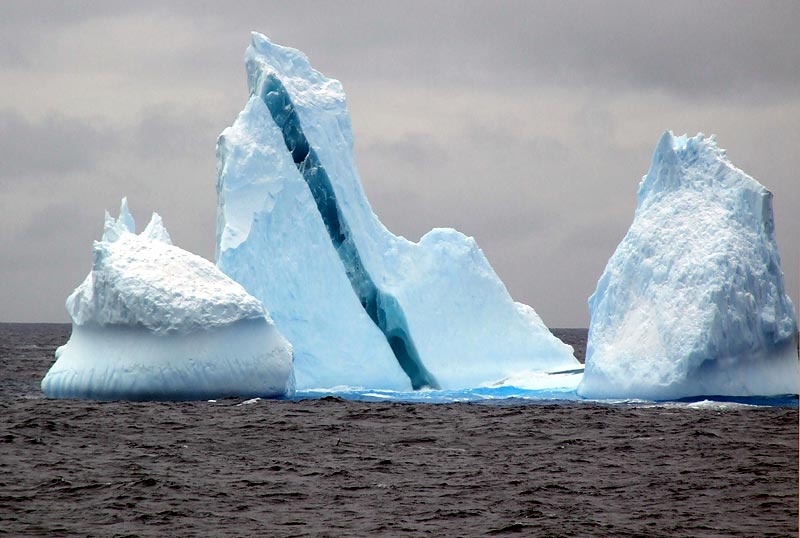Beilei Zhang, our Management Services Officer, recently forwarded the editor an email from her brother which purported to show recent photos of icebergs in Lake Michigan that featured colored stripes. A bit of googling revealed that, while the spectacular photos are very real, they weren’t taken in Lake Michigan. According to Snopes, “these striking pictures of icebergs with multi-colored stripes or banding were taken by a Norwegian sailor named Oyvind Tangen while he was aboard a research ship about 1,700 miles south of Cape Town, South Africa.”
Tangen took the photos 660 miles north of the Antarctic while aboard the Norwegian Institute of Marine Research’s ship “G. O. Sars” in winter, 2008, and he commented that the banded icebergs reminded him of the striped candy he bought as a child. Most icebergs appear to be white because air bubbles trapped within the frozen water scatter the light in every direction. However, many icebergs exhibit marbling or striations that range from shades of blue and green to yellow, brown, and black.
According to the Snopes article, “Icebergs…sometimes have stripes, formed by layers of snow that react to different conditions. Blue stripes are often created when a crevice in the ice sheet fills up with melt water and freezes so quickly that no bubbles form. When an iceberg falls into the sea, a layer of salty seawater can freeze to the underside. If this is rich in algae, it can form a green stripe. Brown, black and yellow lines are caused by sediment, picked up when the ice sheet grinds downhill towards the sea.”
The same article cites a London Times interview of Keith Makinson, of the British Antarctic Survey, who said that icebergs that seemed to show stripes were quite common in southern waters, but it was the first time that he had seen brown stripes. They are believed to be created when ice crystals form under the water and, in a process described as “inverted snow”, rise to stick to the bottom of the ice shelf. As the ice crystals form a new layer at the bottom of the ice shelf, which later fragments to float away as icebergs, tiny particles of organic matter are trapped. Parts of dead marine creatures such as krill form much of the trapped material and have the effect of creating colored stripes, mainly blues and greens, in icebergs. Dr Makinson said that the brown stripes in this example were likely to have been formed from sediment washing underneath the ice shelf.
Editor’s note: For an extreme example of glacial ice coloration, see the 9/11/09 article “Antarctica’s Blood Falls.”





